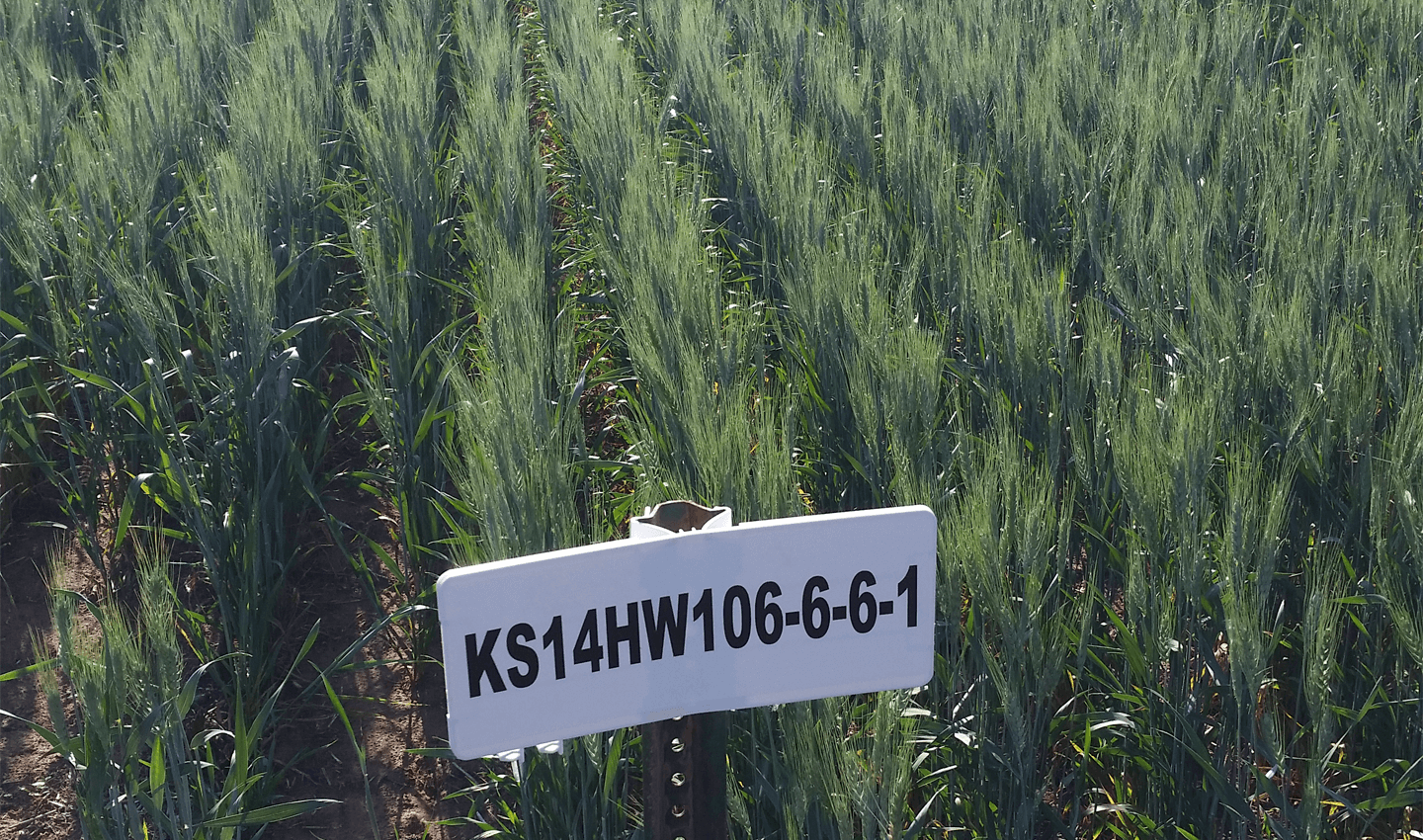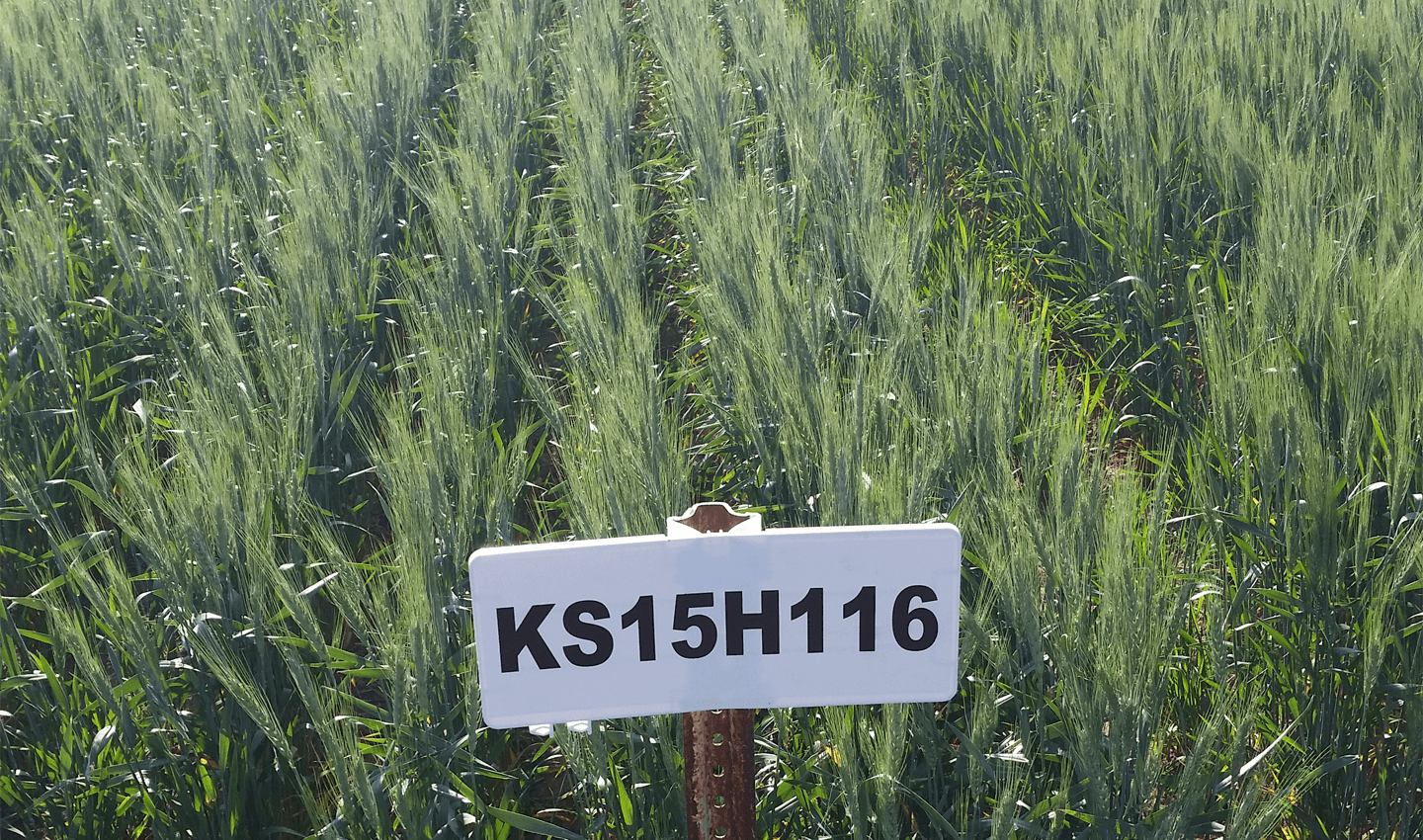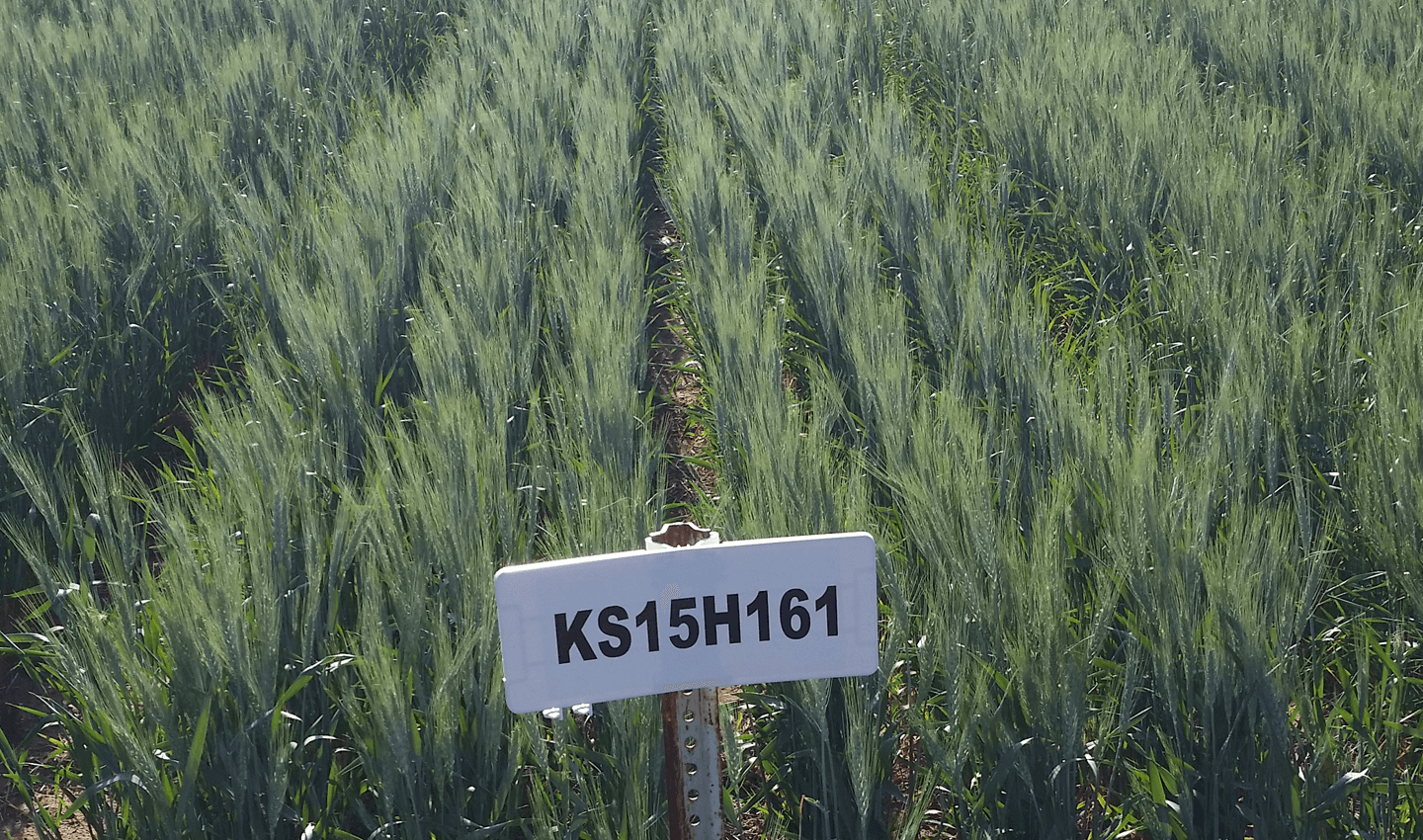Kansas Wheat Alliance will market three new wheat varieties to farmers in the fall of 2020. All varieties offer improved disease resistance, drought resistance and yield potential. Two of the varieties are hard red winter wheat’s and one is white.
The varieties were developed by the Kansas State University Hays Breeding Program. Foundation seed for KS14HW106-6, KS15H116 and KS15H161, better known as KS Silverado, KS Dallas and KS Western Star, will be distributed to Certified seed producers this fall.
KS Silverado
KS Silverado is a hard white winter wheat that is best adapted to central and western Kansas, eastern Colorado, western Oklahoma, southwest Nebraska and the Texas panhandle. It has medium-early maturity and medium-short height. Its shattering resistance is moderate, which is similar to Joe. Its straw strength and pre-harvest sprouting resistance are very good.
KS Silverado has a solid disease package. It showed resistance to wheat streak mosaic virus at 64°F. It has moderate to intermediate resistance to stripe and stem rusts, and wheat blast. It is resistant to leaf rust, Hessian fly, and soilborne mosaic virus. It is moderately susceptible to Fusarium head blight, barley yellow dwarf virus and powdery mildew. Preliminary data showed that it has intermediate resistance to Triticum mosaic virus.
KS Silverado will be a great choice for wheat growers wanting a high-yielding white wheat variety.
KS Dallas
Next is KS Dallas, a hard red winter wheat that is best adapted to the western half of Kansas, eastern Colorado, northwest Oklahoma, the Texas panhandle and southwest Nebraska. It is a medium height and medium maturity variety, with a heading date similar to Tatanka. Notably, it performed well in western Kansas in 2017 and 2018.
KS Dallas has moderate to intermediate resistance to stripe rust and good resistance to wheat streak mosaic virus, leaf rust, stem rust and wheat blasts. Its wheat streak mosaic virus resistance can hold up to 70°F,which is three degrees higher than resistant varieties with WSM2. Preliminary data also showed that KS Dallas has intermediate resistance to Triticum mosaic virus, the second major virus causing wheat streak mosaic disease. It is moderately susceptible to powdery mildew and Hessian fly and susceptible to soilborne mosaic virus and acid soils.
It has good shattering resistance and pre-harvest sprouting resistance. Its straw strength is about average. It also has good milling and baking qualities.
KS Dallas will be a strong performing variety for wheat growers in the central and western regions of Kansas.
KS Western Star
Finally, KS Western Star is a hard red winter wheat that is best adapted to central and western Kansas, eastern Colorado, northwest Oklahoma and southwest Nebraska. It is a medium maturity and medium-tall variety with high yield potential. It exceeded the yields of any other hard red winter wheat varieties in the KIN tests in 2017 and 2018.
KS Western Star has resistances to stripe rust, leaf rust, stem rust and soilborne mosaic virus. It has very good test weight, and good milling and baking qualities. It also has good pre-harvest sprouting resistance.
KS Western Star has improved drought tolerance and straw strength compared to Tatanka, a Kansas Wheat Alliance hard red winter wheat. While it is susceptible to Hessian fly and wheat streak mosaic virus, it has wheat curl mite resistance and intermediate resistance to Triticum mosaic virus. Its wheat curl mite resistance and intermediate resistance to Triticum mosaic virus could help to reduce the wheat streak mosaic disease in western Kansas.
The Kansas Wheat Alliance is able to fund the research and development of new wheat varieties like KS Silverado, KS Dallas and KS Western Star through the royalty collected on the sales of K-State wheat varieties. These royalties provide funding to K-State wheat breeders and their research teams to improve yield and quality. Buying Certified seed every year also supports the breeding programs and gives wheat farmers confidence that their seed meets industry standards.
In addition to these three new wheat varieties, there are several experimental varieties in the pipeline expected to be released next year and the years following.



